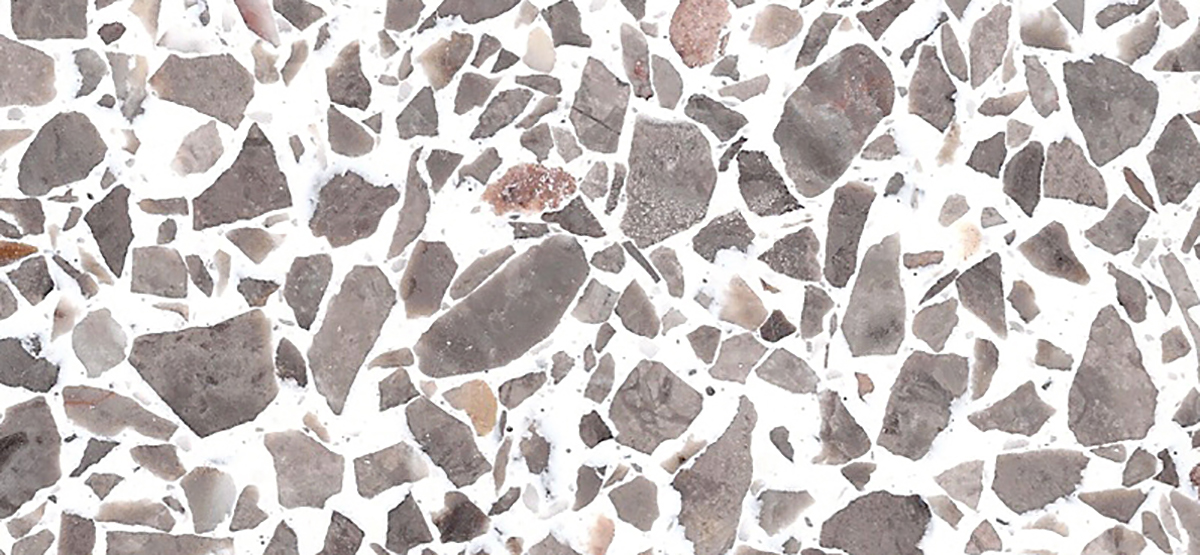One question we get quite often in our day-to-day operations (especially in the field) is about the nature and history of terrazzo. It doesn’t sound to people like a word used today, but, with many designs looking incredibly contemporary, people often wonder where terrazzo originated from, how it worked then, and how it works now.
The History of Terrazzo Flooring
Literally meaning “terrace” in Italian, terrazzo flooring traces its roots to 15th century Venice, when workers used marble remnants to surface the terraces surrounding their living quarters. In this original application, remnant chips were placed in clay, dried, and finally flattened using a hand stone with workers’ body weight. Over the centuries, terrazzo techniques have improved dramatically, but still keep the basic principle used from the very beginning much the same. This modest beginning is a testament to how incredibly effective, long-lasting, and affordable terrazzo has been throughout its long life as a type of flooring. This small group of workers looking for affordable terraces around their homes long ago accidentally stumbled upon one of the more commonly seen types of flooring in the world today.
Terrazzo Today
The terrazzo flooring of today is much the same, yet very different. Modern applications typically use cement or an epoxy in place of clay, but the collection of discarded chips and materials to make terrazzo aggregates is much the same. Some reasons that terrazzo flooring has only increased in popularity from its modest discovery include:
Durability
Terrazzo floors can easily last centuries if allowed to. Unlike tile, linoleum, hardwood, or most other flooring types, terrazzo flooring is often removed long before it cracks, breaks, or otherwise wears. Terrazzo’s non-porous surface make it incredibly resistant to water, stains, and even chemicals that can quickly degrade other flooring types.
Ease of Care
Terrazzo doesn’t require much maintenance at all to retain its appeal. Often, a simple wipe down using a broom and mop are enough to keep terrazzo looking and feeling clean long into the future. Being non-porous, there is little-to-no way for bacteria to grow upon its surface, making an ideal environment for many applications.
Environmentalism
Terrazzo flooring can be made from almost entirely recycled material, and often is. For instance, many of our terrazzo aggregates are made from at least 98% recycled material, including broken bottles, mirrors, and even discarded chips of marble. This allows users to take beautiful, otherwise wasted materials and repurpose them for a long-lasting flooring that won’t create more waste for many years.
Customization
Another large reason that terrazzo flooring has been able to weather the changing tides of flooring fashion throughout the centuries is lent by its ability for customization. Because the terrazzo aggregate pieces used can be of nearly any color, shine, or composition, the capabilities for creating intricate designs, as well as desired looks of many types, can be easily achieved.
Get Yours Today
If you’re looking at terrazzo as an option for an industrial or commercial flooring, home countertop, or even for your own terrace, then you’ve come to the right place! Klein and Company is proud to provide terrazzo materials to contractors across the country with high-quality terrazzo aggregates, supplies, and even equipment.
Check out our store or get in touch with us today for information!
